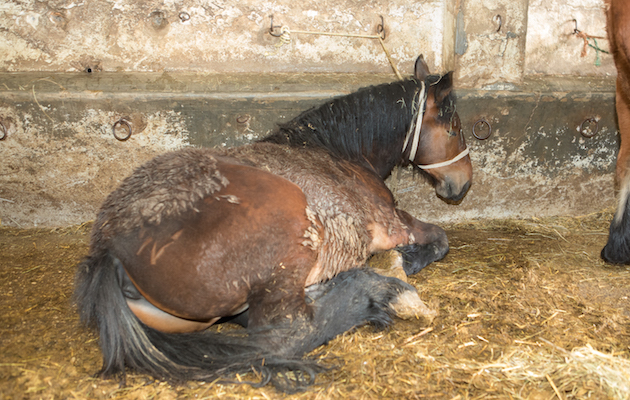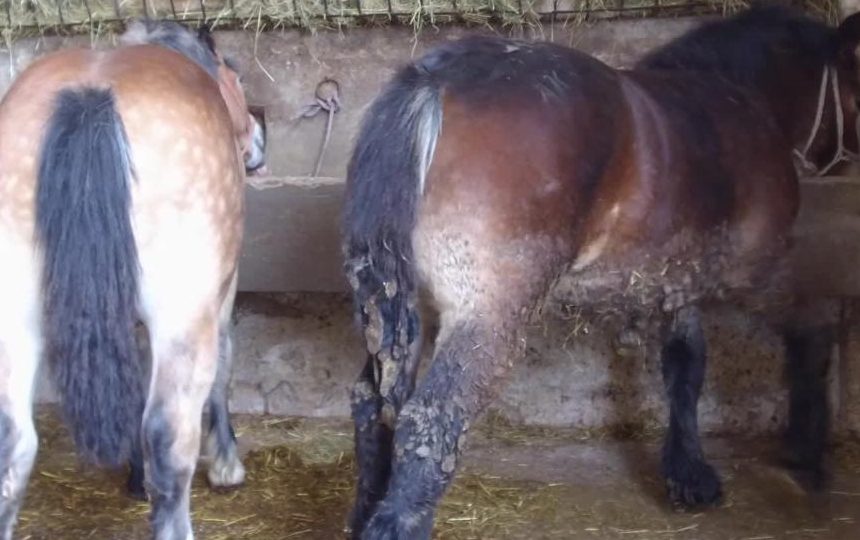The European Commission has announced plans to revise animal welfare legislation, including transport and the slaughter of animals, to “align it with the latest scientific evidence, broaden its scope, make it easier to enforce and ultimately ensure a higher level of animal welfare”. H&H finds out what this means in the decades-long fight against long-distance transport for slaughter
A REVIEW of European regulations on the transport of horses and other animals for slaughter has been described as a “once in a generation” opportunity.
The European Commission has set out plans to review the regulations as part of its Farm to Fork Strategy, under the European Green Deal. The aim of the strategy is to create a healthier and more sustainable EU food system.
The commission stated that better animal welfare improves animal health and food quality, reduces the need for medication and helps preserve biodiversity.
“The commission will revise the animal welfare legislation, including transport and the slaughter of animals, to align it with the latest scientific evidence, broaden its scope, make it easier to enforce and ultimately ensure a higher level of animal welfare,” said a spokesman.
World Horse Welfare chief executive Roly Owers told H&H the charity is “delighted” about the review. World Horse Welfare is in contact with the European Food Safety Authority and will be providing evidence to the commission, with a meeting scheduled this month, as well as providing evidence to the European Parliament and other stakeholders.
The charity, which has been campaigning for an end to long-distance transport of horses for slaughter for decades, is also undertaking research with the University of Bologna on the impact of journey times on welfare.
“The challenge with current legislation is while it does define specific requirements for equines to some degree, the welfare impacts of transport are very complex and therefore we need regulations tailored specifically for equines,” said Mr Owers.
“We know around 42% of live transport of equines across EU member states are intended for slaughter – it’s a significant part so it’s really important legislation to get right.”
The charity is calling for a nine- to 12-hour finite journey limit, more space allowance, and better training and competence of drivers and equine handlers.
“The existing regulation allows journeys up to 24 hours, then a 24-hour rest, then another 24 hours’ journey – you could be going through many different countries and that journey can last an eternal time,” Mr Owers said. “A nine- to 12-hour limit is based in part on scientific evidence, but also harmonises well with driver hours legislation. This makes it more enforceable and easier to comply with.”
“We also know one of the most stressful times of the journey is the loading and unloading so equine handling is really important.”
Mr Owers said the charity, which is a member of the Eurogroup for Animals along with other farm animal charities and the Donkey Sanctuary working on the review, has a meeting with the European Commission at the end of the month, and it is hoped new legislation could arrive in 2023.
“We need to be lobbying very effectively this year because the draft legislation will start to evolve in 2022. The EU is focusing specifically on animals for slaughter so it’s a very distinct element – it won’t impact on animals used in sport. It is focused which is a good thing, but the complexity of the area makes it a challenge,“ he said.
“Undertaking the review is one thing, getting legislation that reflects scientific evidence but is also flexible enough to be adapted when new scientific evidence becomes available, will take a bit of time.”
Mr Owers described the review as a “once in a generation” opportunity.
“Our current strategy is to end the long-distance transport of horses to slaughter across Europe by our centenary 2027, and we think this review means that that goal has never been more attainable. We are absolutely focused on that.”
A spokesman for the Donkey Sanctuary told H&H the charity has been providing information directly into the review as a member of the Eurogroup for Animals.
“We would like to see changes implemented that would allow better enforcement of the regulations, as well as a maximum journey time for equines,” he said.
“All equines should be transported in an appropriate environment, allowing for time to rest, feed, water and recover from the stresses of long distance travel. Donkeys and mules should always be transported under conditions that are suitable to their specific needs.”
You might also be interested in…

Long-distance transport for slaughter: the last stop
Read the last of three blogs about H&H's journey across Europe with World Horse Welfare

Last chance to help stop the suffering of slaughter horses
World Horse Welfare is urging horse-lovers to sign a petition to end the long-distance transport of horses for slaughter, before

Temperature queries on Government’s new horse transport proposals *H&H Plus*

Every voice counts: hours left to back fight against long-distance transport to slaughter
‘I urge everyone to sign so together we can complete the job of ending the long-distance transport of horses to

Act now: how you can help end long-distance transport for slaughter
Every signature counts in World Horse Welfare's campaign to bring an end to these 'completely unnecessary journeys that still cause

Urgent questions over post-Brexit international horse transport *H&H Plus*
A Defra webinar on 4 November explained in detail the steps anyone taking horses from Britain to EU member states


